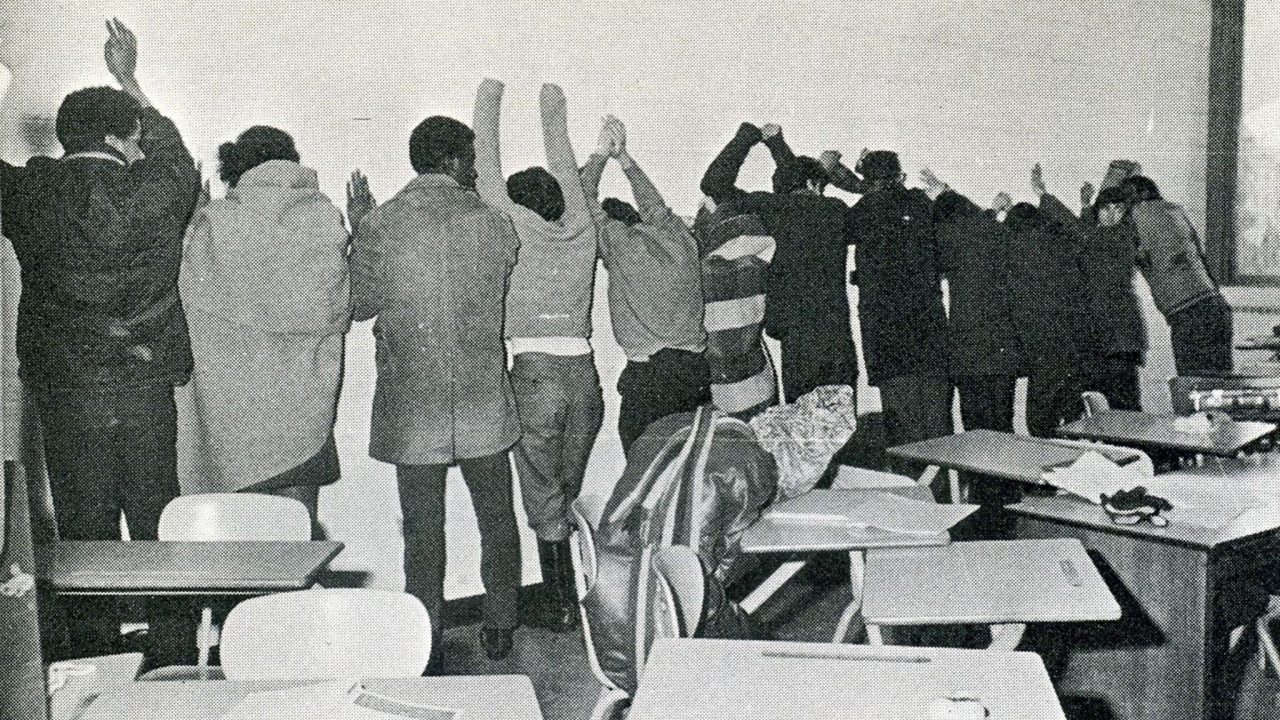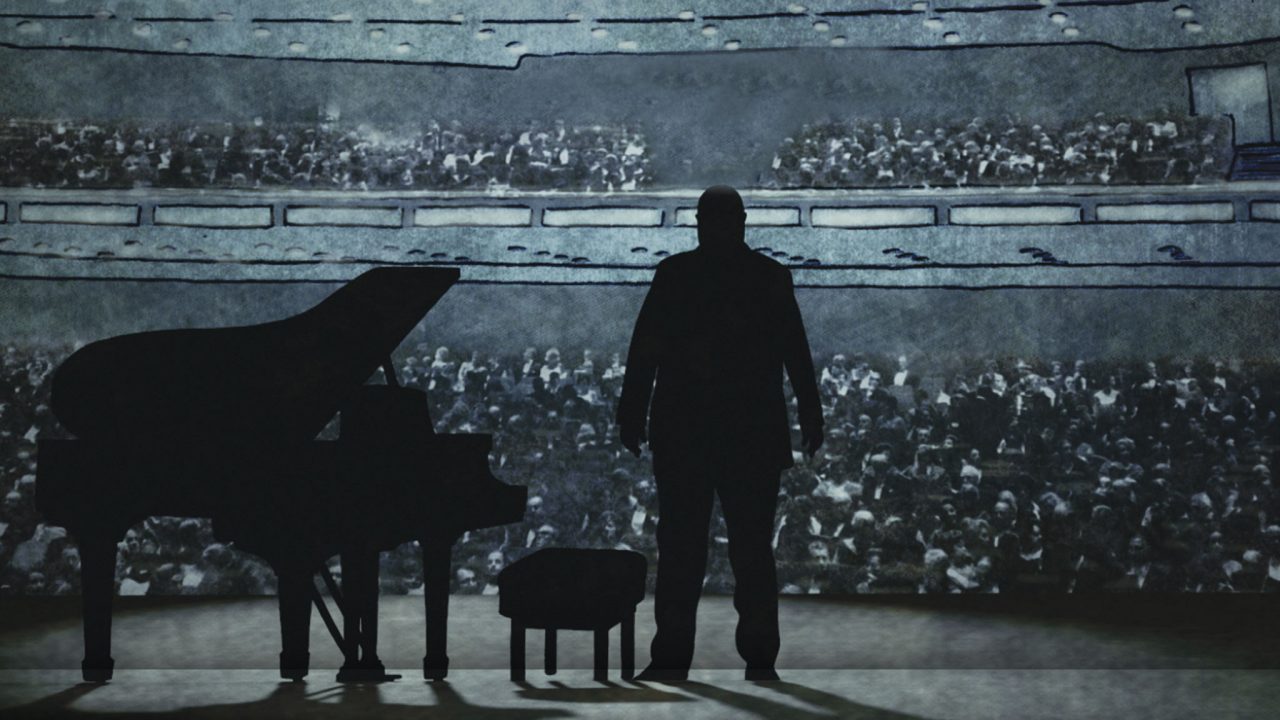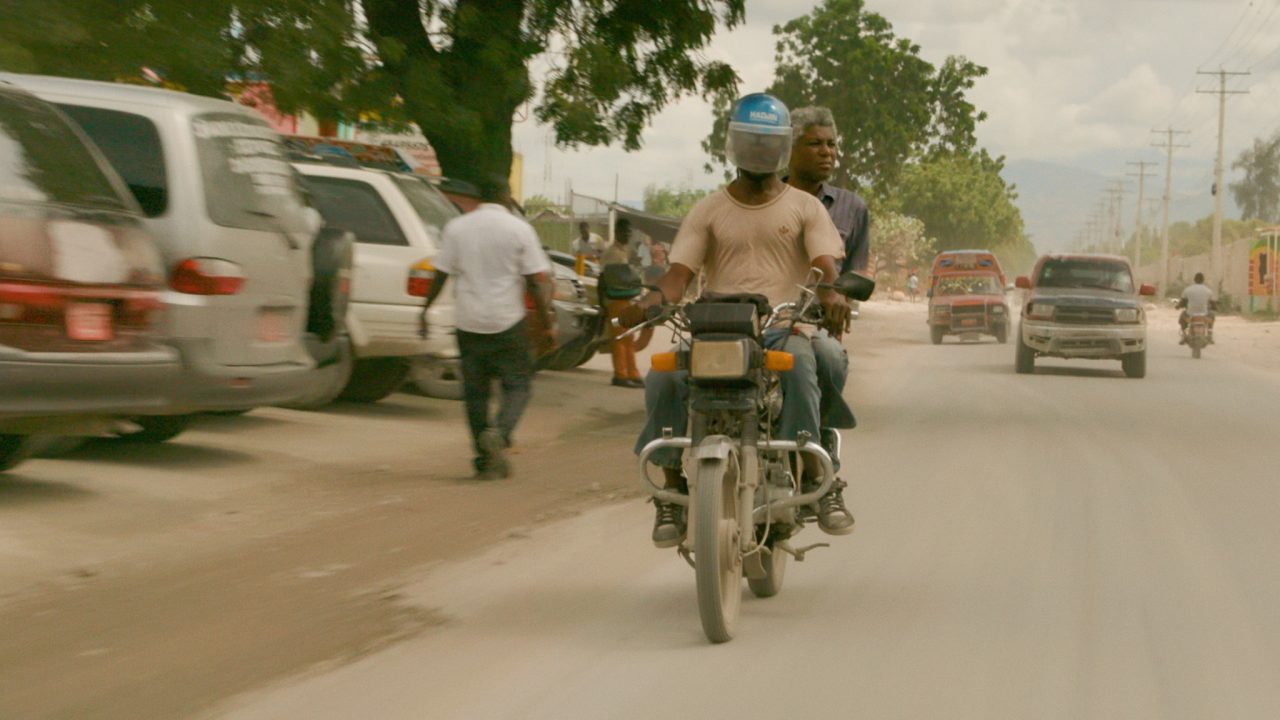
Mini-Lesson for Ninth Floor
Mini-Lesson for Ninth Floor
Mini-Lesson for Ninth Floor
Themes: Diversity/Pluralism, Civics/Citizenship, Social Studies, Heath/Personal Development
Ages: 15–17
Ninth Floor, Mina Shum, provided by the National Film Board of Canada
Keywords/Topics: Racism, Justice, Power, Oppression, Institutional racism, Life in Montreal, Civil society, Responsibility, Discrimination, Resistance, Mental health
Guiding Question: How do racism and discrimination affect quality of life, and how can I help foster greater social unity?
Summary: Ninth Floor is a documentary about the protests and riot that took place at Sir George Williams University in Montreal, Quebec, in 1969. Six Caribbean students accused a professor of racial discrimination, which led to the mobilization of hundreds of students who protested the broader institutional racism they claimed existed at the university. Using powerful metaphors, evocative imagery, archival film and recently recorded interviews, director Mina Shum tries to help the viewer make sense of these events.
Note: Watching this film may trigger strong emotions due to your own experiences with racism, discrimination and injustice or the experiences of people you know. This can be difficult to admit and discuss. However, these topics and feelings can be tackled if we remember to be respectful of each other’s experiences. Reach out to your teacher, school counsellor or the person they direct you to if you feel you need to speak with someone after watching the film.
Activity 1) Eliciting prior knowledge, inference
Before you watch the clip, answer the pre-viewing questions below on your own. Then, watch the clip and write down any new thoughts you may have. Add to your response in another colour to keep track of changes in your thinking before and after watching the clip. Then discuss the post-viewing question with a partner.
Pre-viewing questions: to be answered individually before watching the clip.
- Why do so many people want to immigrate to Canada? In other words, what is the promise of the Canadian experience?
- In your own words, what is racism and what are the different ways in which it affects us and our society? After answering, watch the clip. Add to your responses in a different colour. Share your responses with a partner.
With the same partner, discuss the following post-viewing question:
Near the end of the clip, why do you think Rodney John, one of the original students who complained to the university about racist treatment, said “For those people that may have conflated Expo 67 with the Canadian experience, well, that would have been an error of judgement”?
Go Deeper
In a TED talk, Chimamanda Ngozi Adichie talks about the danger of a single story, meaning that we often have one narrative about a person or group of people and use that to form conclusions about them. She explains how this can lead to misunderstanding and racial discrimination.
What are some ways in which you can combat the danger of a single story about people at your school?
Activity 2) Visualization and imagination
In this video clip, you will see mostly archival footage of the Sir George Williams University protests and similar demonstrations in the sixties. You will first see some violent and aggressive imagery, followed by images of a peaceful protest by the students at Sir George Williams. You’ll also see Nantali Indongo at a microphone rehearsing a song with her band. She is the daughter of Kennedy Fredricks, one of the students who filed the charge of racism against Professor Anderson at the university.
As you watch the video, note the images (at least two) that are most striking to you and describe how they make you feel. To help you capture your thoughts and feelings, watch the clip in two parts. Pause for about 60 seconds at the 2:27 mark before watching the rest of the clip.
Describe or draw an image that represents how you felt while watching the video. This image can be taken from the video or it can be an original picture that you create. It can be literal or metaphorical.
In small groups or pairs, share your images and feelings.
Then, with the same students, discuss the following statements by two of the individuals in the film:
- Nantali Indongo says: “My greatest fear is not effecting change, and not [being] able to feel that, OK, I contributed to something in a large way.”
- Robert Hubsher (in the black-and-white footage) says: “Now I’m going to call you a racist, and I’m going to call you a racist for a very good reason, because I was a racist. Yeah, sure, I knew about the oppression of the Blacks, but I never done anything. As long as I haven’t done anything, I’m a racist, and as long as you don’t do anything, you’re a racist!” What do you think about their statements? Why do you think they made them? How do they make you feel?
Go Deeper
Some of the people interviewed in the film talk about individual and institutional racism. They also discuss explicit and implicit racism. What are examples of this that you have studied, seen or lived? Create a public service announcement to explain how everyday citizens can make an impact in terms of reducing or eliminating these forms of racism.
Activity 3) Reflection and making connections
As you watch this video clip, reflect on the following:
- In what ways can we find resolution, even when there is no clear conclusion or external justice for the conflicts we face?
- What role can the arts—such as filmmaking, music, and other visual arts or forms of storytelling—play in the process of living with and healing from traumatic situations like racism?
Explain your thinking with examples from the video and others you have seen or studied.
Write your responses on two post-it notes of different colours. You don’t have to write your name on the notes. Place your response to question 1 on one wall. Place your response to question 2 on the opposite wall. Read what other students have written on their post-it notes to get a sense of their thoughts.
Finally, pair up and explore the main inquiry question: How do racism and discrimination affect quality of life, and how can I help foster greater social unity?
Write down a shared response. Explain your response with at least one example from the video and something you’ve learned in your class during the year.
Go Deeper
Create a website that responds to the main inquiry question through an example of something currently happening in your city or country or elsewhere in the world. Remember to present the issue and the ways in which you can make a positive impact.
Asif-Aly Penwala is an experienced secondary teacher and mentor with a double master’s degree from the University of London’s Institute of Education. He has taught and worked with teachers across Canada and in countries such as France, Madagascar, the United States, England and Tajikistan. He has also worked in community development with immigrants and refugees.
Pour lire cet article en français, cliquez ici.
Discover more Mini-Lessons | Watch educational films on NFB Education | Watch educational playlists on NFB Education | Follow NFB Education on Facebook | Follow NFB Education on Pinterest | Subscribe to the NFB Education Newsletter



